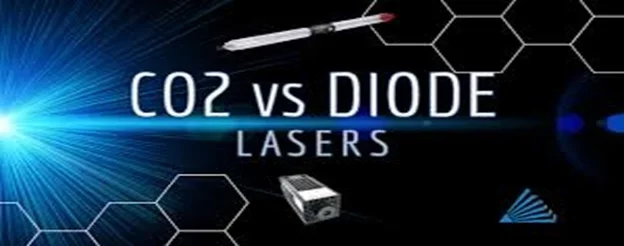Introduction
Laser cutting has become an essential tool for both hobbyists and professionals alike. With various options available, selecting the right laser cutter for your specific needs is crucial to achieving the desired results. Two of the most popular types are CO2 and diode laser cutters, each with its own strengths and applications. This guide will help you determine which is the best fit for your projects.
What is a CO2 Laser Cutter?
CO2 laser cutters operate using a gas mixture—primarily CO2—excited by electricity to produce a high-powered laser beam. This beam is capable of cutting through a wide range of materials, including wood, acrylic, leather, and some metals. The precision and power of CO2 laser engravers make them ideal for detailed and complex projects. However, these machines typically come with higher costs, both in terms of initial investment and maintenance.
What is a Diode Laser Cutter?
Diode laser cutters utilize semiconductor diodes to generate a laser beam. These lasers are generally less powerful than CO2 lasers, but they are highly effective for specific applications, such as engraving or cutting thin, soft materials like certain woods and plastics. Diode lasers are more affordable and user-friendly, making them an excellent choice for beginners or those with smaller-scale projects.
Power and Performance Comparison
When comparing CO2 and diode laser cutters, one of the most significant differences lies in their power output. CO2 lasers typically range from 30W to over 400W, enabling them to cut through thicker materials and at faster speeds. Diode lasers, on the other hand, usually range from 1W to 15W, which limits their cutting depth and speed but still offers sufficient power for lighter tasks. The higher power of CO2 lasers also translates into greater precision, which is crucial for intricate designs.
Material Compatibility
CO2 laser cutters are versatile, handling a broader spectrum of materials, including non-metallic ones like wood, paper, glass, textiles, and even certain metals with the appropriate setup. Diode lasers, while versatile in their own right, are more limited, often being most effective on wood, some plastics, and other soft materials. They are not typically suited for cutting metals or thicker materials.
Cost Considerations
CO2 laser cutters tend to be more expensive, with higher upfront costs and more significant maintenance needs, such as regular tube replacement and cooling system upkeep. Diode lasers are more budget-friendly, with lower initial costs and simpler maintenance, making them accessible for hobbyists or small businesses with limited budgets. However, the lower cost often comes with trade-offs in power and material versatility.
Ease of Use and Maintenance
Diode lasers are generally easier to operate, making them a great starting point for beginners. They are portable, require less maintenance, and have a shorter learning curve. CO2 lasers, while more powerful, are more complex and require a higher level of technical understanding. Maintenance for CO2 lasers can be more involved, including alignment of mirrors and regular replacement of laser tubes.
Applications and Use Cases
CO2 lasers are ideal for professional applications where precision and the ability to cut a wide variety of materials are critical. They are commonly used in industries like automotive, aerospace, and manufacturing, as well as by artists and designers for intricate cutting and engraving. Diode lasers, with their lower power, are best suited for lighter tasks, such as engraving wood, creating signs, or working on smaller-scale craft projects. They are particularly popular among hobbyists and small business owners who need an affordable and straightforward solution.
Making the Right Choice for Your Projects
When deciding between a CO2 and a diode laser cutter, consider the specific needs of your projects. If you require high power, precision, and the ability to work with a wide range of materials, a CO2 laser may be the better option, despite the higher cost. For those who prioritize affordability, ease of use, and are working with lighter materials, a diode laser cutter could be the perfect fit.
Conclusion
Choosing the right laser cutter is essential to the success of your projects. By understanding the differences between CO2 and diode lasers, you can make an informed decision that aligns with your project requirements, budget, and long-term goals. If you are considering a CO2 laser cutter, brands like OMTech offer a range of reliable and affordable options that might fit your needs, particularly if you seek professional-grade performance without the premium price tag. Evaluate your options carefully to find the best match for your projects.
For more information click here.









